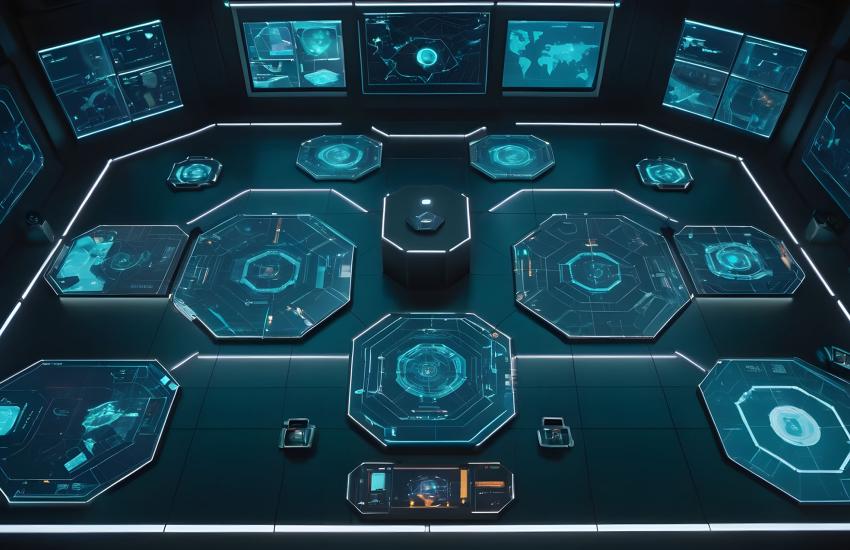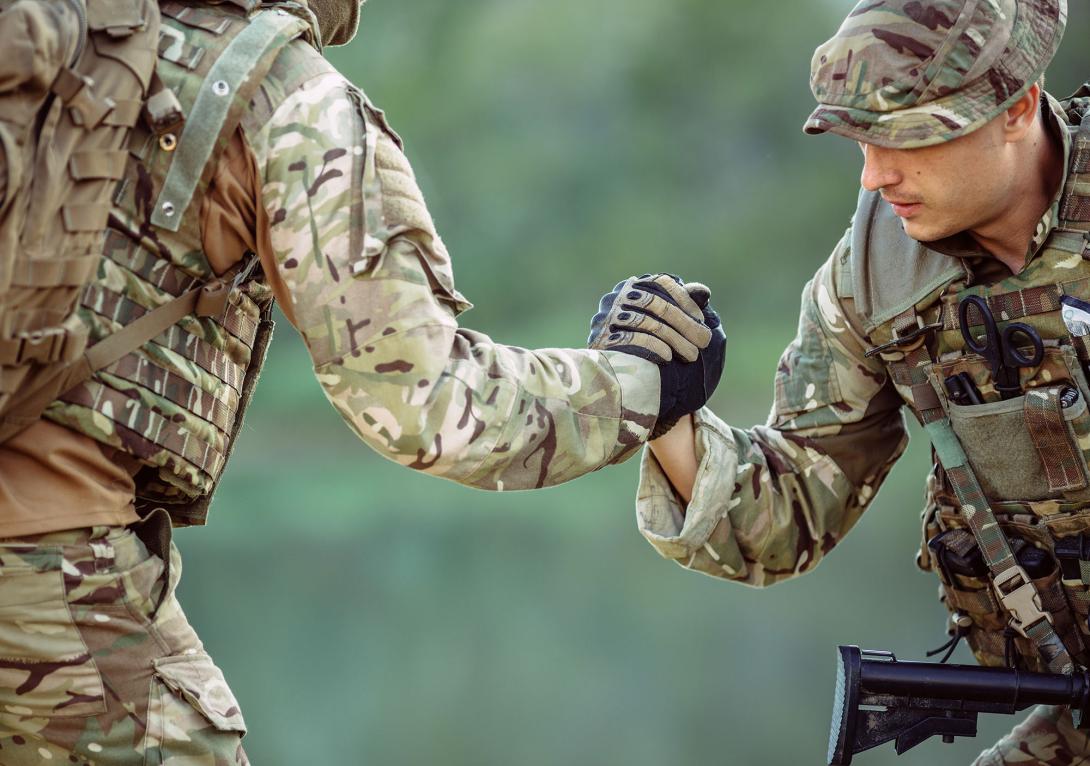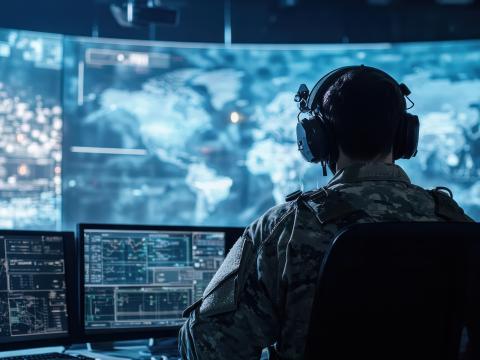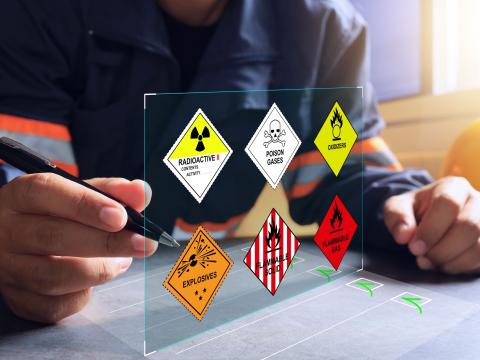From Tactical Edge to Global Reach: The Army’s Next Generation Command and Control and Its Role in CJADC2
Introduction: The Imperative of Decision Dominance and the Rise of CJADC2
The operational landscape of modern warfare is defined by increasing complexity, rapid engagements and the convergence of operations across all domains—land, sea, air, space and cyberspace. In this environment, decision dominance—the ability to rapidly process information, assess conditions and coordinate responses—is critical to mission success. The Department of Defense (DOD) is addressing this critical need through the combined joint all-domain command and control (CJADC2) initiative. CJADC2 is an ongoing enterprise-wide effort to integrate sensors, shooters and decision-makers across all domains and forces, including allied partners. It aims to establish a robust, interconnected framework that enables real-time data sharing, seamless interoperability and accelerated decision cycles.
CJADC2 addresses core command and control (C2) challenges, including data fragmentation and silos, latency in decision-making, multinational interoperability and all-domain synchronization. To overcome these challenges, the CJADC2 strategy is organized into five lines of effort: data, human and technology enterprises, integrating nuclear C2 and communications, and modernizing mission-partner information sharing.
The implementation of this approach and the capabilities needed to achieve CJADC2 objectives are guided by several overarching principles, including enterprise-designed and scaled information sharing, cybersecure networks, data- and interoperability-driven standards, resiliency in a degraded environment, unity of effort in capability development and delivery with speed.
NGC2: Advancing Army C2 To Realize the CJADC2 Vision
The U.S. Army’s Next Generation Command and Control (NGC2) system is a foundational element in realizing the CJADC2 vision. The Army officially established the NGC2 program office within the Program Executive Office Command, Control, Communications, and Network in April. This initiative aims to revolutionize C2 capabilities by enhancing decision-making speed and effectiveness for commanders. Col. Chris Anderson assumed leadership as the first program manager during an Assumption of Charter ceremony in April at Aberdeen Proving Ground, Maryland. Under his guidance, the NGC2 team will work closely with the Army Futures Command to ensure rapid and continuous delivery of advanced C2 solutions.
NGC2 represents a transformative, modernized, scalable and data-centric approach, designed to fully integrate ground forces into the joint C2 architecture and enhance both tactical and operational effectiveness. NGC2 aims to deliver a common operational picture accessible across all echelons, leveraging a single, secure network, and is built upon the principles of modularity, scalability and interoperability.
Unlike previous C2 modernization efforts, NGC2 is built on a “clean slate” methodology, prioritizing adaptability and interoperability from the outset. The program builds upon the Army’s C2 Fix initiative and transformation in contact efforts, leveraging modern commercial software and open systems design to deliver intuitive, scalable and complementary C2 services. NGC2 is a fundamental shift toward a software-defined C2 capability, prioritizing speed of development and deployment, and directly supports the CJADC2 goal of reducing sensor-to-shooter timelines from hours and minutes to seconds.
Core Capabilities of NGC2 and Their Contribution to CJADC2 Principles
NGC2’s capabilities are specifically designed to advance CJADC2’s guiding principles:
- Cloud-Native Architecture: The NGC2 is built to operate within existing and future cloud environments, delivering C2 capabilities to the edge without legacy server stacks, making tactical formations lighter and more agile. This distributed, transport-agnostic architecture enhances data sharing at echelon and across large areas of operation. Scalability and resilience are built in, as NGC2 is also designed to operate in a hybrid cloud environment, with its lightweight yet powerful edge compute and storage capabilities.
- Unified Data Fabric: NGC2 introduces a robust data architecture that eliminates silos and enhances accessibility. By aggregating data from diverse sources—sensors, intelligence, fire control, logistics and maneuver elements—into a standardized framework, it provides actionable information to commanders. This fabric utilizes application programming interfaces (APIs) to facilitate data exchange with joint and coalition partners and is built on a common data model, directly supporting the CJADC2 Strategy’s emphasis on a common data fabric for interoperability.
- Modular Open System Architecture: The open system framework within the NGC2 architecture allows adaptability and the continuous integration of emerging technology from multiple vendors. This approach is consistent with the CJADC2 seamless interoperability and anti-vendor lock directive. Software compatibility and integration through multi-enclave, cloud-native APIs and microservice software modules allow the Army’s common operating environment and tactical data platform to interface with joint and coalition partners’ mission command applications.
- Artificial Intelligence (AI) and Machine Learning (ML): By leveraging AI/ML algorithms to process vast data sets, identify patterns, predict adversary actions and generate optimized courses of action, NGC2 accelerates the “sense, make sense, act” cycle, supporting CJADC2’s goal of decision dominance. AI and ML further enhance the observe-orient-decide-act, or OODA, loop by enabling rapid and precise data collection, improving situational awareness, reducing cognitive load and optimizing decision-making with predictive insights and automated responses.
- Resilient and Lightweight Tactical Networks: Recognizing the need for operational continuity in contested environments, NGC2 prioritizes lightweight, mobile and survivable networking solutions. This ensures robust connectivity at the tactical edge. NGC2 will integrate with existing networks and explore technologies like mesh networks and satellite communications, supporting the CJADC2 Strategy’s emphasis on resilient and secure communication networks.
- Virtualization of Legacy Systems: NGC2’s ability to virtualize legacy hardware reduces logistical burdens, enhances agility and improves data sharing. This allows previously siloed data to be integrated into the NGC2 data fabric without frequent, costly hardware updates.

Project Convergence and Persistent Experimentation
The Army’s Project Convergence Capstone series serves as the primary experimentation venue for testing and advancing NGC2 capabilities, focusing on integrating with joint and coalition partners through multidomain mission threads. Recent Project Convergence assessments have demonstrated NGC2’s advancements in decision speed, joint and cross-domain kill webs and multinational synchronization.
Strategic Implications and the Path Forward
NGC2 is critical to the realization of the Army’s multidomain operations strategy, advancing synchronized cross-domain coordination and effects. With its open architecture design and the use of APIs, NGC2 enhances and strengthens coalition data sharing with our allies and partners. Although technology maturation, fiscal and policy challenges lie ahead, NGC2’s clean slate approach affords Army senior leaders flexibility in an otherwise rigid acquisition and governance model. Addressing cybersecurity risks and ensuring data integrity throughout the CJADC2 ecosystem are also paramount. Continued collaboration across the DOD and industry will be essential for realizing the full potential of NGC2 within the CJADC2 framework.
Conclusion: Forging the Future of Army C2 in a Joint Multidomain Environment
NGC2 is the foundation for operational modernization, ensuring that ground forces are fully integrated with the CJADC2 initiative. By leveraging state-of-the-art technology, modular open systems architecture and data-centric frameworks, NGC2 arms joint force commanders with decision speed, agility and effectiveness—the decision dominance required for the next-generation battlefield. NGC2’s success is vital to realizing the broader CJADC2 vision of a fully integrated and interoperable joint force capable of dominating in multidomain operations. The Army’s commitment to NGC2 underscores its role in shaping the future of warfare—one where information dominance and interoperability define operational success.
Lt. Col. Kyle D. Barrett is a U.S. Army signal officer with two decades of service. He currently works at Headquarters, Department of the Army, Mission Command Support Element. He brings extensive experience in signal operations across all tactical echelons.





Comments